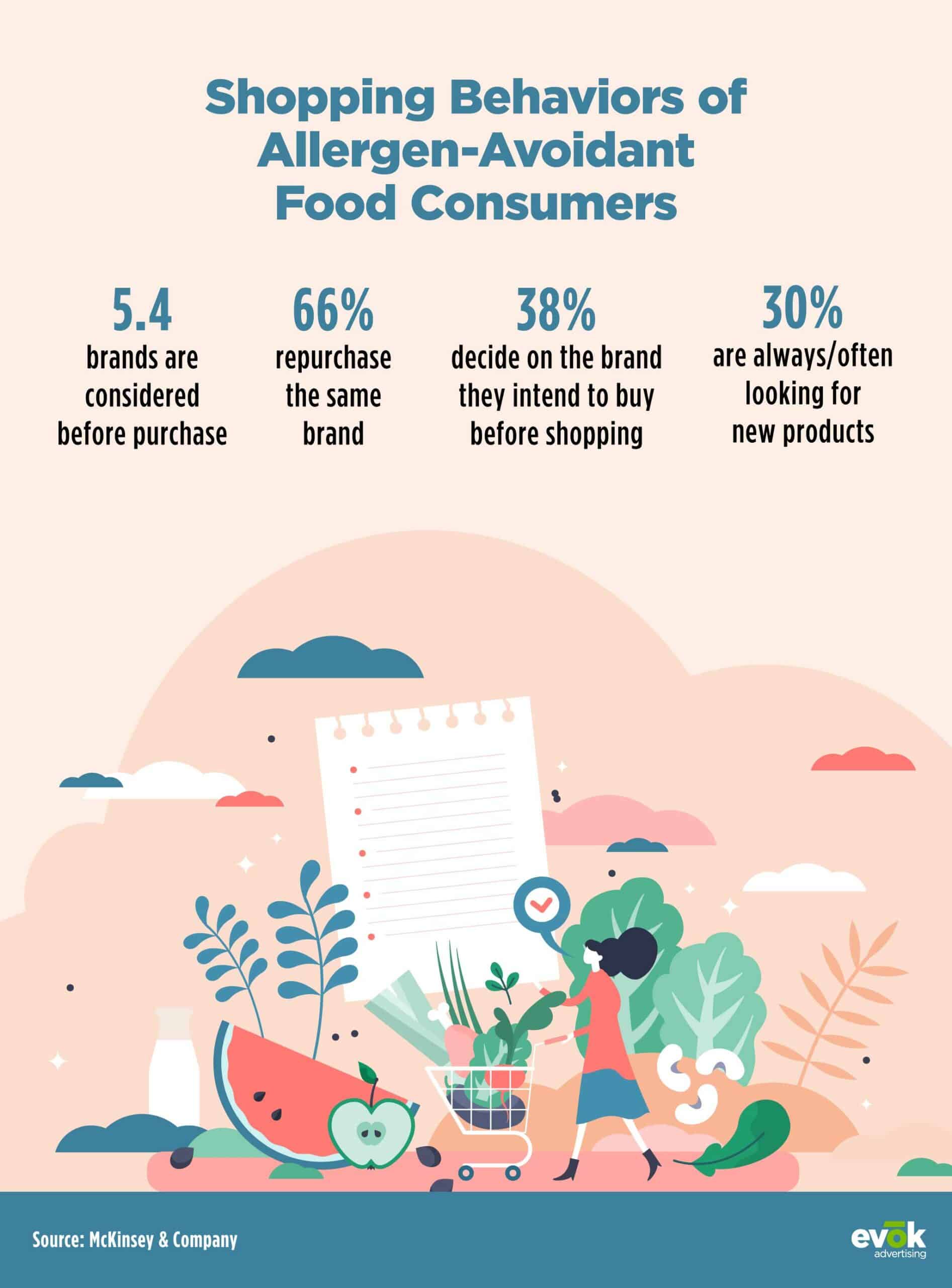
The Growing Market for Food-Allergic Consumers in CPG Marketing
Did you know that nearly half a billion people worldwide are allergen-conscious food and beverage shoppers? Food allergies are on the rise and, even more, the number of children with food allergies continues to grow, making parents increasingly stressed about meeting those dietary restrictions.

Families are feeling desperate for answers, and they’re turning to trusted food brands for confidence in their purchasing decisions. Research shows whether the shopper has a food allergy or is shopping for someone who does, they want to avoid any stresses in the grocery aisles. Some choose to read labels, while others avoid entire categories of products. Some are willing to pay more for high-quality ingredients, while others stick to smaller allergy-friendly brands over mainstream products.
It’s become evident that products are scarce for this audience segment, and it presents a big opportunity for CPG brands to step up to the plate for this growing population.
Understanding the Food-Allergic Audience
There are more than 160 ingredients that consumers are allergic to, but only nine are responsible for most reactions in the U.S.
While consumers with food allergies seem like a niche market, they actually represent 32 million Americans as a whole. This is not only a big segment of the U.S. population but also a big opportunity for CPG brands to help cater to the needs of consumers looking for answers. Whether these consumers are mildly allergic to certain ingredients or fully intolerant, the risk of health problems affects their overall attitudes and purchasing behaviors in everyday life.
The Rising Opportunities for CPG Brands
There’s a growing demand for allergy-friendly products, and consumers are looking to CPG brands for confidence in their purchasing decisions. Whether it’s coming from an entirely new brand or a new product from a trusted brand, consumers are willing to venture out of their comfort zone to find what’s best for them. With that said, if consumers discover a product they love, then they are more likely to stay loyal to the brand. So, CPG companies that bring a trustworthy, allergy-friendly product to the shelves first ultimately have the advantage of retaining more consumers.
Beyond an allergy-friendly product that pleases the taste buds, consumers are looking for brands with better labeling about allergens, easier accessibility across various stores, and a more comprehensive selection overall.
One of the biggest frustrations consumers have during the purchasing process is spending time reading labels to understand if a product is safe. This is where CPG brands can step forward and enhance their product packaging to inform consumers better.
How Can CPG Brands Reach Food-Allergic Consumers?

Food-allergic shoppers tend to make grocery store runs with intent. They do their research beforehand and scout out the items that fit their dietary needs. They know what they want and they’ll compare shelf items to find what’s best. So, how can CPG brands stand out on a crowded shelf to win over this consumer? There are three things to consider when launching a product to a food-allergic audience.
The Versatility of the Product
How versatile is your product? Consumers with certain food allergies are limited to the products they can purchase, making it difficult to cover their bases for breakfast, lunch, and dinner. It’s up to brands to step up and show consumers that their products can meet their lifestyle requirements. For example, if you sell gluten-free bread, it can be served for breakfast or lunch, allowing consumers to be versatile in the ways they use your product.
Partnering with Bloggers or Influencers
With so much uncertainty and misinformation about allergy-friendly products, many consumers look to bloggers and influencers with similar lifestyles for reviews and guidance. Influencers are a great way for CPG brands to position their products as healthy and trustworthy alternatives that the whole family can enjoy. Alongside brand exposure, these social-media-savvy marketers can take it a step further by sharing recipes fit for your product.
Offering Transparency
If you want brand loyalty then you must consider brand transparency. This top-of-mind trend amongst CPG brands allows customers to form a deeper connection because it allows them to understand the roots of a product, from where it comes from to how it’s made. This level of transparency can ultimately determine whether a customer chooses your brand over the next.
Are Universal Food Allergen Labels Next for CPG?
Grocery shopping is still an obstacle course for food-allergy consumers. According to FARE, Over half of Americans with food allergies indicate that current labels are problematic, and over 70% say they spend, on average, three to five minutes reading labels of every food item purchased. While the FDA requires brands to disclose the top eight allergens in their ingredients list, it’s clear that there is still ambiguity as to what’s safe for who.
CPG brands have an opportunity to pave the way by creating easy-to-spot labeling that quickly notifies consumers about an allergy-friendly product. This not only cuts their time for grocery shopping but also reduces the risk for potential emergency room visits, proving that a small shift in product packaging can not only go a long way for your brand but also your customers.